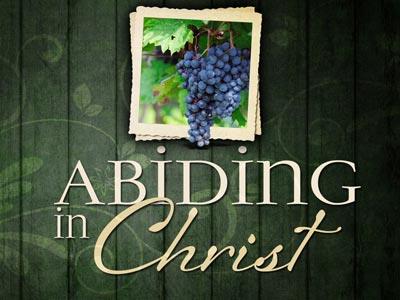-
What Is Truth On The Last Sunday Of The Church's Year The Feast Of Christ The King
Contributed by Revd. Martin Dale on Mar 17, 2025 (message contributor)
Summary: As we come to the end of the Church's year, we are left to consider Who is Jesus Not just who was Jesus but who is Jesus Is the Resurrection real and if so how does it affect the way we live
What is Truth - Jn 18:33-38
Christ the King is the last Sunday of the season of pre-Advent and of the end of the church’s year.
The Church’s year begins next week with the preparation for the birth of Jesus in Advent.
And so the Feast of Christ the King - is the last Festival in the Church’s year.
It is particularly fitting that we begin the Church’s year - by reflecting on Jesus’ coming to earth 2000 years ago in Advent
It was then he left the absolute power of his Everlasting Kingship behind.
And at the end the Church’s year - TODAY - we remember that he has taken up again that absolute power of his everlasting Kingship.
“Christ the King” Sunday is a fairly recent festival.
Story of the Feast Day
It was started by Pope Pius XI - when he published his encyclical on 11th December 1925.
It grew out of Pius’ concern at how secular the world was becoming.
In those days communism was on the rise and people were beginning to think that “science would soon prove there was no God”
The First World War had shattered traditional values of faith in God – especially in the light of the horrendous numbers of people killed in war.
People were turning from God to humanism
And so Pope Pius wanted a festival where we remembered that Jesus really is King of Kings and Lord of Lords.
So you might say – as I did when I was first preparing this talk
“what a strange lesson we have this morning to remember “Christ the King
Our Gospel reading is part of his trial before Pilate, prior to his crucifixion.
And it is in our reading that Jesus is asked if he is a King by Pilate.
And Jesus replied
"You are right in saying I am a king. In fact, for this reason I was born, and for this I came into the world, to testify to the truth.
Everyone on the side of truth listens to me."
We live in a post-modern society that no longer believes in the absolutes of truth
Our modern philosophy has been summed up as follows:
“There are no absolutes except the absolute that that there are no absolutes.”
Each person is entitled to “his or her truth” and one is deemed arrogant to contradict this position.
We see in politics that “content of policies” seems to be less important than “image”.
But this isn’t a new dilemma.
For we see in this morning’s Gospel passage, Pilate asking Jesus the question that is so relevant today:
“What is truth?”
Pilate was a man with a dilemma in the
middle of Jesus’ trial for his life.
The Jews had him in a corner.
Pilate knew Jesus was not guilty – he had
said as much yet when push came to shove, what was going to win out – his career or justice.
Was Pilate prepared to put all that he had worked so hard for on the line for an obscure Jewish carpenter?
Truth seemed to be quite an alien concept to the Roman Procurator.
1. Introduction:
What does history tell us about Pilate?
He was Roman Upper middle class man and had been appointed Procurator of Judea – very much a poisoned chalice in the Roman Foreign Office.
Judea was consider “uncivilized” by Roman standards.
As Procurator, he had
i) the power of life and death
ii) appointed High Priests
iii) controlled the Jewish Temple and funds
What do we know of Pilate from historical sources.
There are four acts of Pilate recorded by Josephus
1. Roman standards in Jerusalem
Pilate’s first recorded action can be found in Josephus’s Antiquities (Ant. 18 55).
Here Pilate set up Roman Standards (bearing the image of the emperor) in Jerusalem.
He broke with the previous practice of Roman Procurators and inflaming Jewish sensitivities because
• not only was it a sign that the Jews were an occupied nation but
• the Roman Standards were considered a sacrilege too - as the Emperor was by this stage deified.
For the Jews in Jerusalem this contravened the second of the Ten Commandments. (Ex 20:4)
Jewish feelings ran so high that he had to remove them six days later.
2. Pilate raided the Temple Funds to build an aqueduct in Jerusalem
Pilate’s second recorded action is also found in Josephus’ Antiquities (Ant.18 60).
Here Pilate appropriated Temple funds to build an aqueduct into Jerusalem.
When the Jews protested he sent in the troops and caused a massacre.
3. Trial and Crucifixion of Jesus
Pilate’s third (and most infamous) recorded action can be found in all four Gospels – for example in Jn 18-19.
This was the trial and crucifixion of Jesus Christ.
4. Massacre at Mount Gerizin

 Sermon Central
Sermon Central



